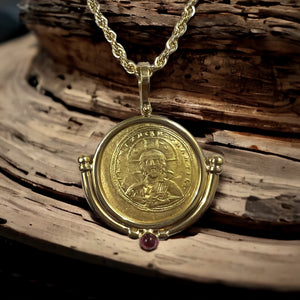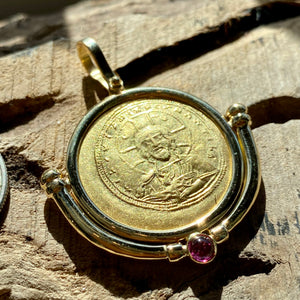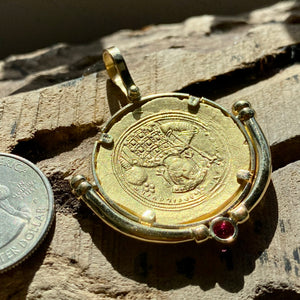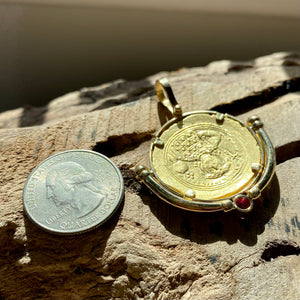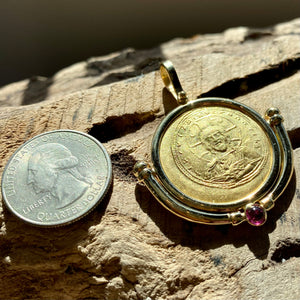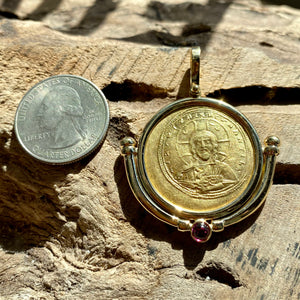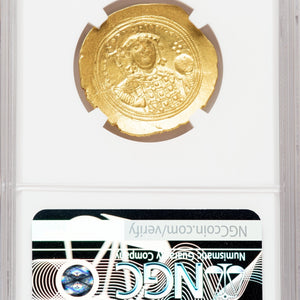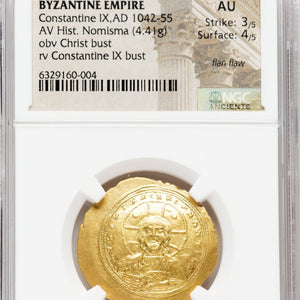Ancient Byzantine - AV HIstamenon - Constantine IX Monomachus - Date: Circa 1042-055 AD
$3,786
Denomination: AV Histamenon nomisa
Date: Circa – 1042 – 1055 AD
Mint: Constantinople mint
Weight: 4.41 g
Mount: 18K gold – Accented with a Pink Tourmaline
Grade: NGC 6329160-004 AU - Strike: 3/5 Surface: 4/5
Description: AV Histamenon (27mm) Constantinople Mint. Obverse: (+IhS XIS RЄX RЄϚNANTIhm) bust of Christ facing with nimbus cruciger, crescents in the upper quadrants, wearing pallium and colobium, raising right hand in benediction, book of Gospels in left arm; triple border. Reverse: (+CwhST-ATh-bASILEЧS Rm), bust of Constantine IX facing, with mustache and short beard, wearing crown with pendilia and loros of square pattern, cruciform scepter in right hand, globe surmounted by pelleted cross in left; triple border.
History: Constantine IX Monomachos (Medieval Greek: Κωνσταντῖνος Μονομάχος,) - Romanized: Kōnstantinos IX Monomachos). He was born on January 11th, 1004, and died on January 11th 1055. He reigned as Byzantine emperor from June 1042 to January 1055. Empress Zoë Porphyrogenita chose him as a husband and co-emperor in 1042, although he had been exiled for conspiring against her previous husband, Emperor Michael IV the Paphlagonian. The couple shared the throne with Zoë's sister Theodora Porphyrogenita. Zoë died in 1050, and Constantine continued his collaboration with Theodora until his own death five years later.
Ever since Emperor Constantine I, introduced it in 309, the Byzantine Empire's main coinage had been the high-quality solidus or nomisma, which had remained standard in weight (4.55 grams) and gold content (24 carats) through the centuries. Emperor Nikephoros II Phokas (r. 963–969), however, introduced a new coin, the [nomisma] tetarteron ("quarter coin") which was 2 carats lighter than the original nomisma. The latter now became known as the histamenon, from the Greek verb ἵστημι, "to stand up", implying that these followed the traditional standard. The reasons for this change are not clear; Byzantine chroniclers, however, suggest fiscal motives, reporting that Nikephoros collected the taxes as before in the histamenon. while paying back with the tetarteron, which was officially rated as equal in value to the full-weight coin.
61209









